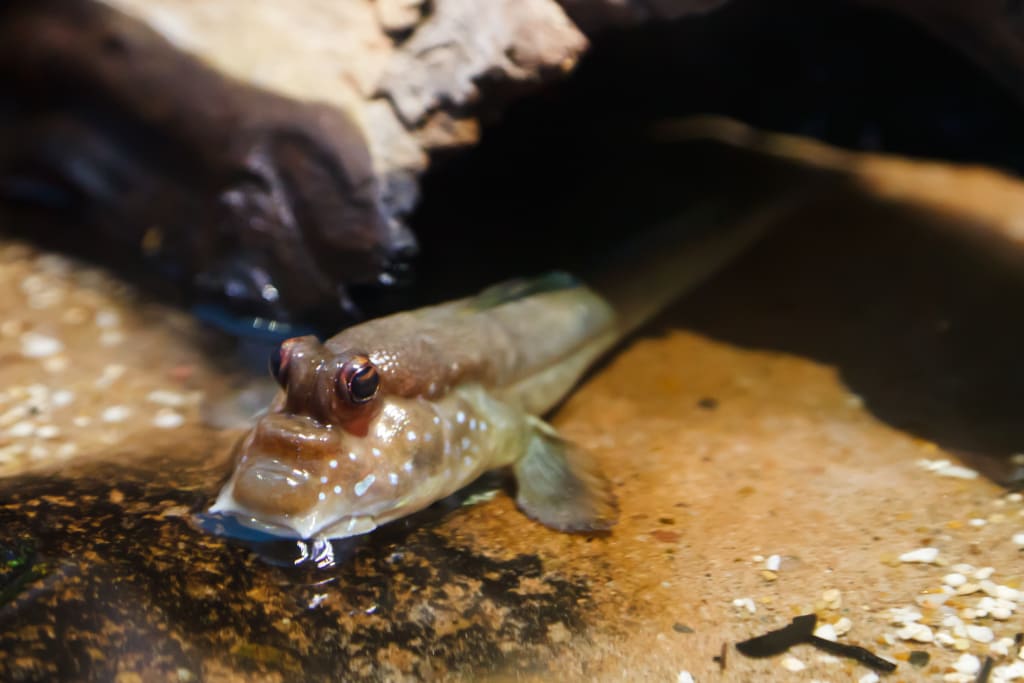Weirdest animal discovery
Animals you didn't know existed

The axolotl is a fascinating animal that has the ability to regenerate its limbs and other organs like the spinal cord. This unique characteristic has made it a popular research subject in the field of regenerative medicine. Axolotls are also visually striking with their distinctive frilly gills and smiley face, adding to their appeal among pet owners. Native to Mexico, these creatures have suffered from habitat loss and pollution and are currently an endangered species. Conservation efforts are underway to protect the axolotl and its unique qualities.
The star-nosed mole might look peculiar with its pink, star-shaped nose, but that unique sniffer is an incredibly effective device to find food beneath the ground. This mole has 22 fleshy tentacles around its nose, which are covered in sensory receptors that help it to feel out prey. They're not the most attractive creatures to look at, but they're certainly well adapted to their environment. Star-nosed moles are found in wetlands throughout eastern North America and are important ecosystem engineers.
The aye-aye is a type of lemur that is not only visually unusual but also has a unique way of finding food. They use their long middle fingers to scoop out insects from trees, making them an essential part of their habitat. These fascinating primates also have a unique auditory system that allows them to communicate with each other over long distances. Unfortunately, aye-ayes are considered a vulnerable species, with habitat loss being a significant threat to their survival.
The blobfish is a gelatinous fish that lives deep in the ocean, giving it the appearance of a slimy, shapeless blob. They're pretty much the poster child for unappealing animals, but they're harmless to humans and play an important role in their marine ecosystem. Blobfish are found off the coast of Australia, New Zealand, and Tasmania, and are currently considered endangered due to deep-sea trawling and human-caused climate change.
The Saiga antelope is known for its extremely long, hooked nose. It's a pretty unusual feature for an antelope, but it has an important purpose. The nose is designed to warm up and filter the cold, dry air in the steppes and deserts of Central Asia where it lives. With only an estimated 4,000 individuals left in the wild due to hunting and habitat loss, the future of the Saiga antelope species is uncertain.
The proboscis monkey is easily recognizable by its big, floppy nose. It's an essential tool to maintain their complex social groups, as it helps the males attract females and establish dominance. Proboscis monkeys are found in the rainforests of Borneo and are important ecosystem contributors. Unfortunately, due to habitat destruction and hunting, their population has declined and they are currently considered endangered.
The okapi looks like it's wearing striped leggings, but really, it just has an unusually patterned fur coat. The okapi is actually related to the giraffe and shares several of its characteristics, including its long, blue tongue. They are found in the Ituri Forest in the Democratic Republic of Congo and are an important part of their habitat, serving as seed dispersers for many plant species. Their population has been significantly impacted by habitat loss and poaching.
The Dumbo octopus is named for its resemblance to the famous Disney character. This deep-sea creature has round ear-like fins which it flaps to move around. They are an important part of their underwater ecosystem, helping to maintain the ocean's food chains by consuming small invertebrates. They are primarily found in the depths of the Pacific Ocean and are considered vulnerable to human-induced climate change.
The naked mole rat is a hairless, subterranean rodent that has an unusual social structure. They live in underground burrows in colonies that can number in the hundreds and are led by a single dominant female. Naked mole rats are also unique regarding cancer resistance, and their cells are being researched into for possible human treatments. They can be found in sub-Saharan Africa, and like many other species, suffer from habitat destruction.
Finally, the platypus is a peculiar animal with several unique characteristics. Unlike most mammals, they lay eggs, and the males are venomous. They use electroreceptors to locate their prey, and their bill is sensitive enough to detect the electrical activity of their prey in the water. Platypuses are found in freshwater habitats throughout eastern Australia and are an essential part of their ecosystem. However, their population has declined due to habitat loss from human development and agricultural expansion.
In conclusion, the animal kingdom is full of fascinating and peculiar creatures, and the ten animals mentioned in this essay are just a handful of examples. From axolotls with regenerative capabilities to star-nosed moles with pink, star-shaped noses, and from blobfishes living in the deep sea to naked mole rats that are virtually cancer-proof- every animal has its unique characteristics contribute to climate, ecology and aid science progress. It's important to protect and conserve these animals and their habitats for future generations to enjoy.
Re






Comments
There are no comments for this story
Be the first to respond and start the conversation.